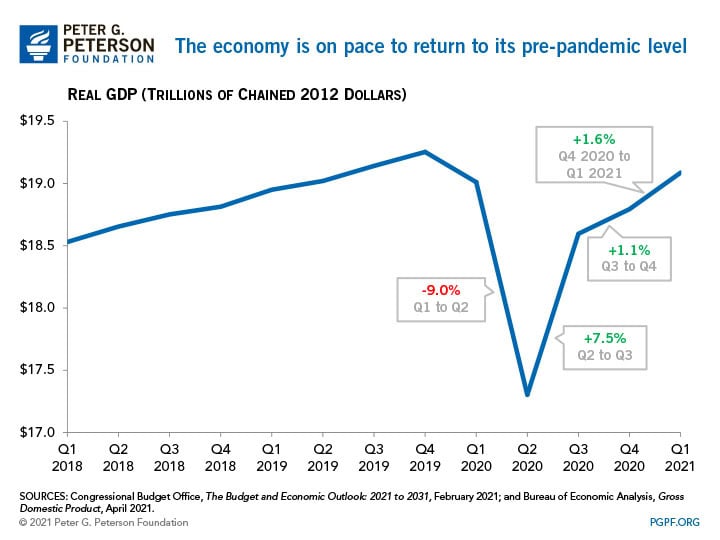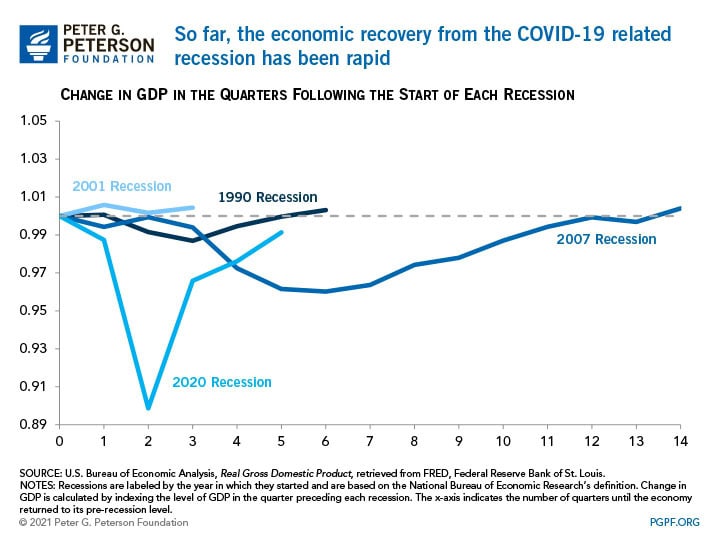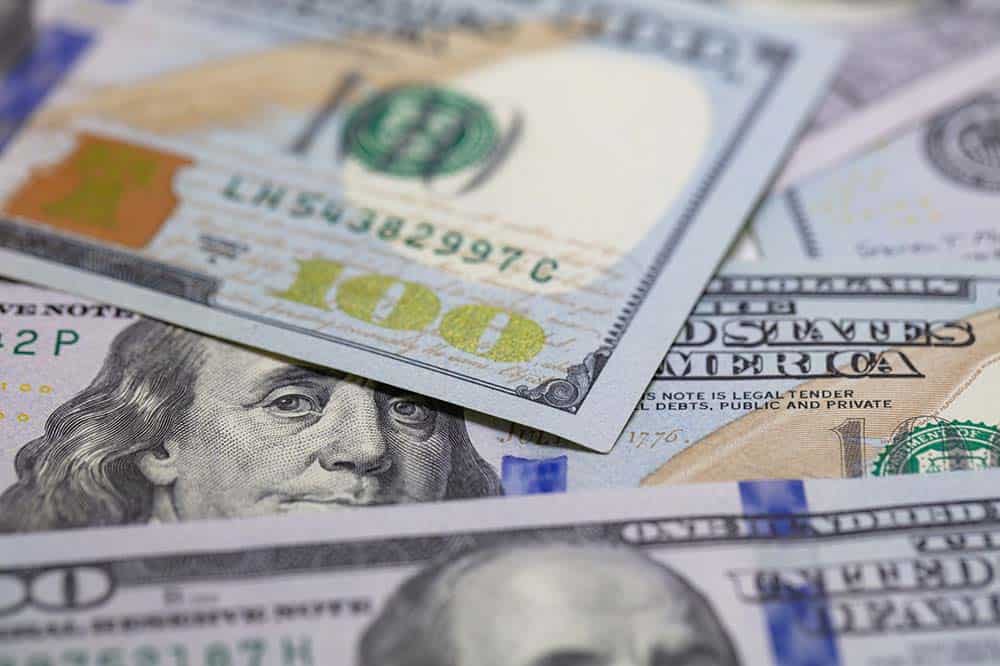Economic growth strengthened in the first quarter of 2021 according to new data from the Bureau of Economic Analysis (BEA). The continued economic recovery and reopening of businesses has been fueled by COVID relief programs and an accelerating vaccination effort. After three consecutive quarters of growth, the economy is getting close to its pre-pandemic level.
Real (inflation-adjusted) gross domestic product (GDP) grew by an annual rate of 6.4 percent in the first quarter of 2021, according to the BEA. Looking at the quarter in isolation (without annualizing the growth), the economy grew by 1.6 percent. Real GDP remains $166 billion below its level in the final quarter of 2019, but is expected to return to that level in the current quarter.

The increase in real GDP was driven by a large jump in private consumption of goods (23.6 percent on an annualized basis compared with the previous quarter), federal spending (13.9 percent), and certain types of investment; both residential and non-residential investment each increased by around 10 percent. However, a decrease in private inventories (and particularly retail trade inventories) led to a contraction in overall private domestic investment of -5.0 percent.
The economic recovery in the last three quarters is cause for optimism, though the labor market will likely take longer to recover than will the broader economy. In fact, given the depth of the recession, the recovery so far has happened more quickly than in past recessions.

That strong rebound is largely thanks to unprecedented levels of government spending. As policymakers turn their eyes towards longer-term issues, though, they should keep in mind that our fiscal outlook is a necessary element of positioning America for its next chapter.
Image credit: Photo by Matthew Hatcher/Getty Images
Further Reading
National Debt Puts Upward Pressure on Inflation and Interest Rates
America’s unsustainable fiscal outlook can have “significant consequences for price stability, interest rates, and overall economic performance,” according to a new report.
Why Is the Federal Deficit High If Unemployment Is Low?
The U.S. is experiencing an unusual and concerning phenomenon — the annual deficit is high even though the unemployment rate is low.
What Is Inflation and Why Does It Matter?
Here’s an overview of inflation, why it matters, and how it’s managed.


